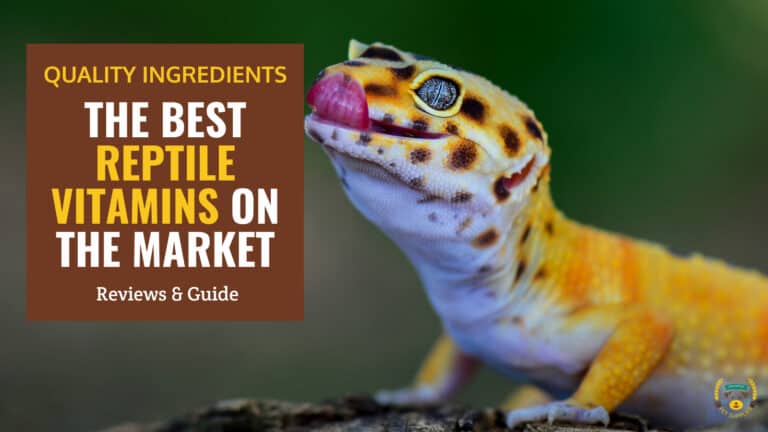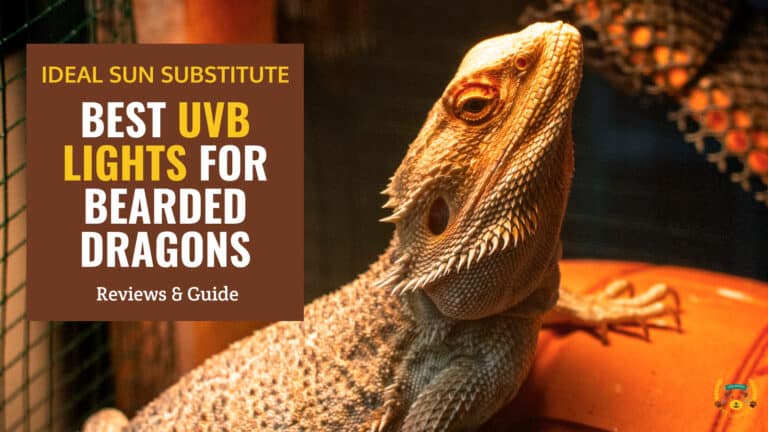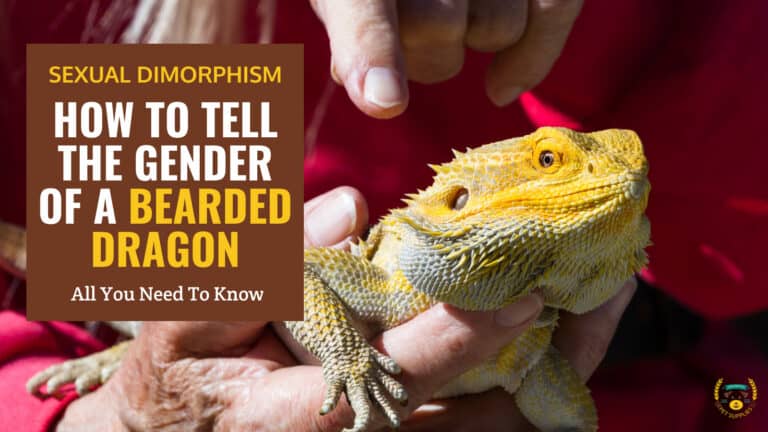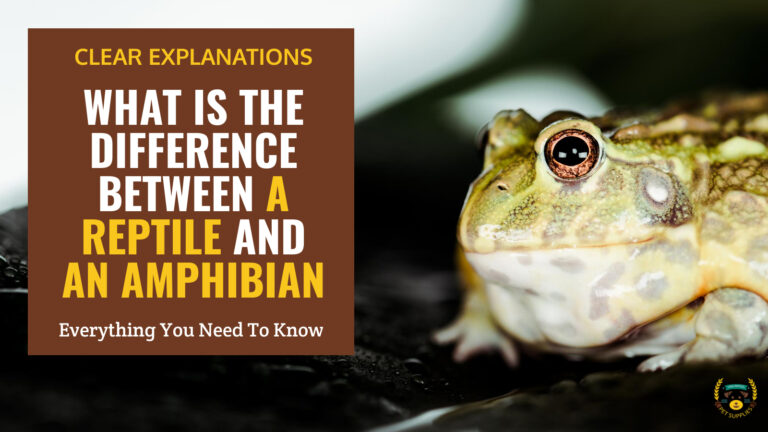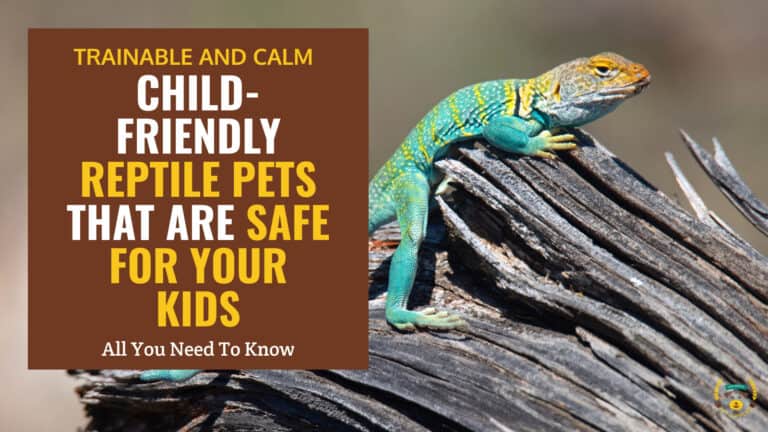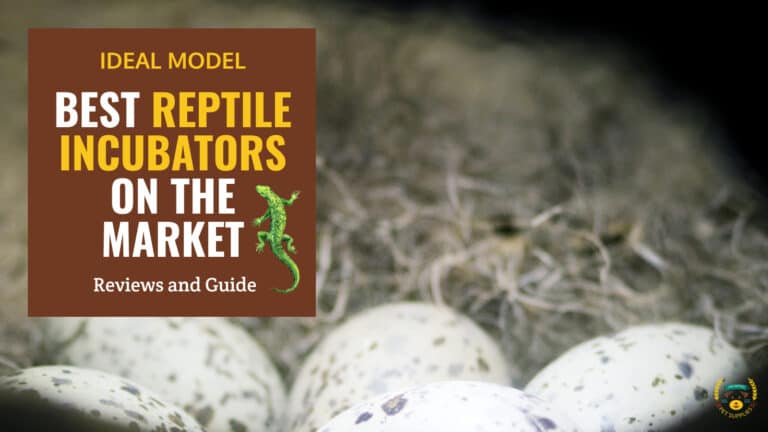How Big Does a Bearded Dragon Get?
Last updated: February 8, 2024
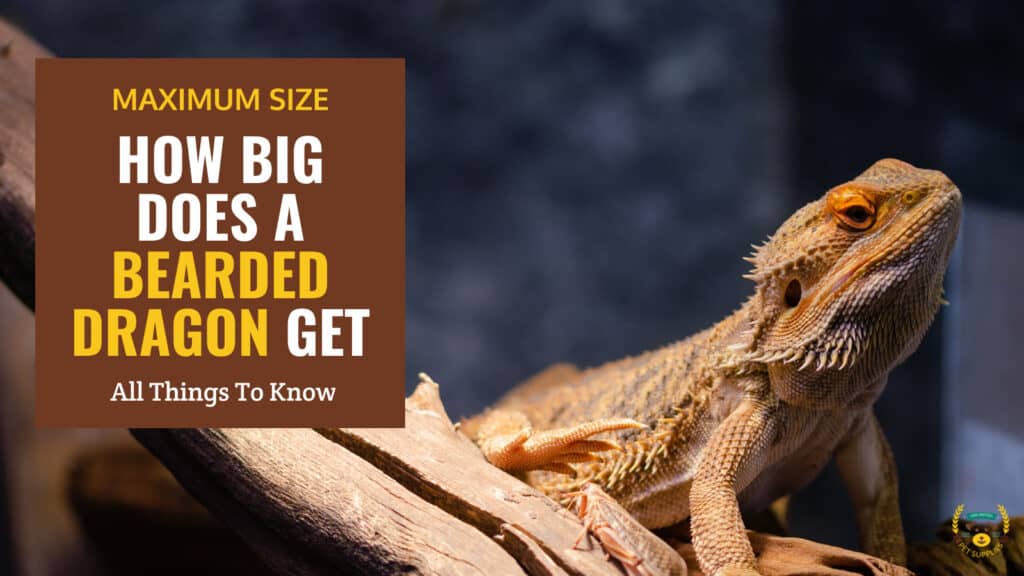
Summary
- A full-grown Bearded dragon may typically reach 18-24 inches long and 350-550 grams as adults.
- Size varies due to genetics, diet, health, and care.
- Giant morphs: Bred for size (25-28 inches), require excellent care.
- Sexual dimorphism: Males larger than females.
- Females: 16-22 inches long.
- Males: 18-24 inches long.
- Responsible care promotes natural size.
The average full-grown bearded dragon typically reaches 18-24 inches (45-60 cm) in total length from the tip of the nose to the end of the tail. Healthy adult weight can range considerably based on the individual dragon's body frame, but often falls somewhere between 350-550 grams.
However, bearded dragons exhibit a high degree of variability in their final adult dimensions. Reaching their maximum size potential depends on several key factors like genetics, food intake, health conditions, and husbandry.
In this article, we will explore the topic of bearded dragon size and weight and cover each life stage in detail for you to have an idea of what to expect if you decide to adopt one of these beauties.
- 1) Factors Affecting Adult Size
- 2) Baby Bearded Dragon Size and Growth Rate
- 3) Max Bearded Dragon Size
- 4) Size Differences Between Sexes
- 5) Enclosure Size Guidelines
-
6)
Frequently Asked Questions
- 6.1) How can I track if my bearded dragon is growing at a healthy rate?
- 6.2) How long does it take a bearded dragon to reach full adult size?
- 6.3) What's the biggest bearded dragon on record and how did it get so large?
- 6.4) Can you make a bearded dragon grow bigger than its genetics dictate through extra feeding or supplements?
- 7) Final Thoughts
Factors Affecting Adult Size
The following are the main factors that affect adult bearded dragon size:
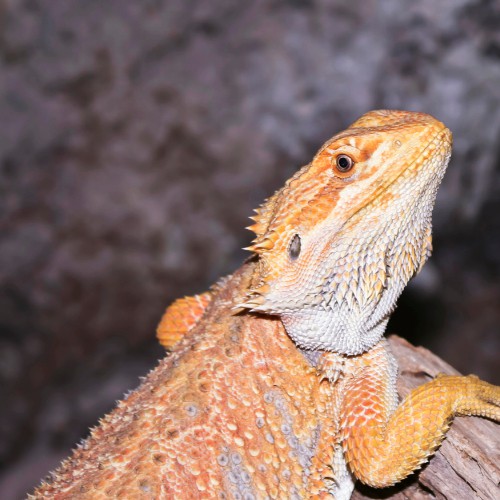
Genetics
Genetics play a major role in determining the bearded dragon's programmed size. Some bloodlines tend to run smaller or larger. Breeders have also developed "giant" morphs that are bred specifically for enhanced size.
Feed Intake
The quality and quantity of feed intake impact growth rate. Bearded dragons that are fed optimal diets from a young age are more likely to reach the upper end of their genetic size potential.
Husbandry Conditions
While proper housing, temperatures, lighting, and other husbandry parameters support ideal skeletal development and growth, providing a balanced and nutritious diet and supplements is crucial for reaching a bearded dragon's full genetic size potential. Poor conditions can restrict mature dimensions.
Health and Illness
Chronic health conditions, metabolic disorders, parasites, and other medical issues can impair growth. A healthy bearded dragon has the best chance of reaching maximum adult size.
While genetics broadly dictate dimensional potential, optimizing these other factors allows each individual to fully express their preprogrammed mature size.
Baby Bearded Dragon Size and Growth Rate
Newly hatched bearded dragons are extremely small, often weighing just 4-6 grams and measuring around 3-5 inches (7-12 cm) long from head to tail. However, they grow rapidly within their first year.
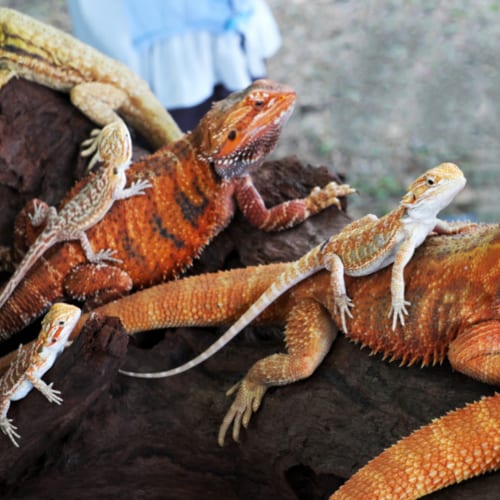
Hatchling Size
When bearded dragon eggs hatch after an incubation period of 55-75 days, the tiny hatchlings that emerge are not much bigger than a thumb. Their small size and underdeveloped bodies make them vulnerable in the wild.
Typically, Newborn bearded dragons weigh between 4-6 grams and are 3-5 inches (7-12 cm) in length.
First-Year Growth Spurts
Bearded dragon growth rates are at their highest during the first 12 months, fueled by their voracious appetites. When fed properly, they can double, triple or even quadruple in size within their first year.
- At 1 month old, most are 6-8 inches (15-20 cm)
- At 3 months old, they reach 8-12 inches (20-30 cm)
- At 6 months old, 12-16 inches (30-40 cm) is common
- By 9 to 12 months old, most bearded dragons achieve near-adult proportions of 16-20 inches (40-50 cm)
Adult Size Timeline
As bearded dragons near sexual maturity around 12-18 months old, their rapid growth begins to slow down. They primarily focus on filling out to adult weight rather than length. Most reach their full adult size around 18-24 months old. An occasional growth spurt may happen later on.
Max Bearded Dragon Size
While most bearded dragons top out at 18-24 inches (45-60 cm), some exceptional individuals can grow even larger. Selective breeding and optimized care allow them to reach their full genetic potential.
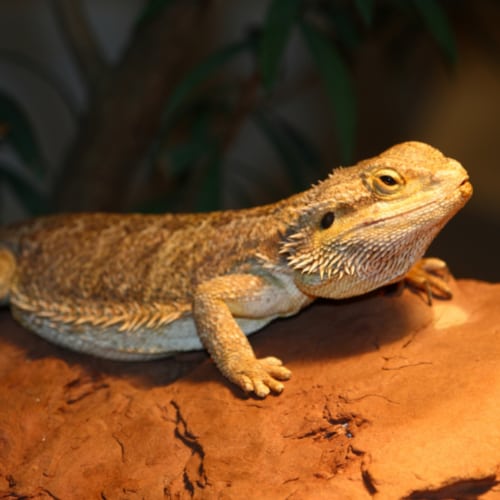
Record Holders
The largest confirmed bearded dragon on record measured 28 inches (71 cm) long. Giant specimens like this are extremely rare, even with the best possible husbandry. There are also unverified reports of bearded dragons surpassing 30 inches (76 cm).
Contributing Factors to exceptional sizes include the following:
- Favorable genetics
- High-quality diet from a young age
- Excellent housing conditions
- A long healthy life over 5+ years
Giant Breeds
Certain bloodlines have been specifically bred for enhanced size; some examples are:
- German Giants that can reach 25-28 inches (63-71 cm)
- Monster Morph, with an extra-large frame and jumbo features
- Paradox Giants that combine size genetics from two major breed lines
When acquired from a reputable breeder and properly cared for, giant morphs can grow bigger without major health issues.
Unnatural Giantism
Pushing bearded dragons to unnaturally large sizes through excessive feeding can lead to obesity, metabolic bone disease, liver disease, arthritis, cardiovascular strain, and reduced lifespan.
Responsible keepers allow their dragon to reach the adult size predetermined by genetics, not forced growth. An extremely large or overweight dragon likely has serious health problems.
Size Differences Between Sexes
Male and female bearded dragons exhibit sexual dimorphism, meaning there are physical size differences between the sexes. Females tend to be smaller than males on average.
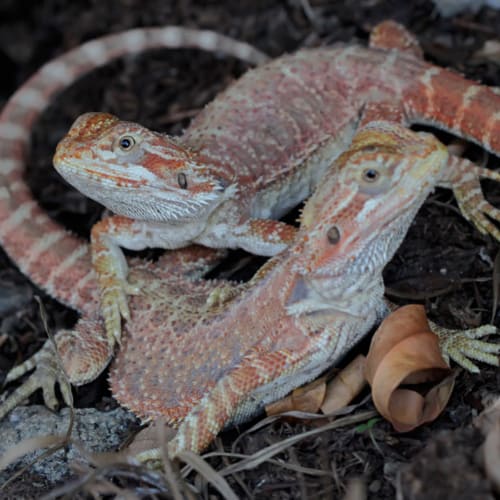
Sexual Dimorphism
Males typically grow bigger and bulkier than females, a common pattern seen in reptiles and other animals. These size differences likely evolved to aid reproductive fitness. Potential reasons may be:
- Breeding advantages: Larger males can dominate smaller rivals when competing for mates. Smaller females can produce more eggs.
- Territory defense: Bulkier males are better equipped to patrol and defend a territory with resources to support a harem of females.
So while their size ranges overlap, males generally achieve larger dimensions than females of comparable health and age.
Female Size Range
Most healthy adult females reach 16-22 inches (40-55 cm) long. Smaller females may produce fewer, smaller eggs while larger ones can lay larger, more frequent clutches.
The smallest females reach around 14 inches (35 cm); average females grow up to around 18 inches (45 cm), while the largest ones can reach 22 inches (55 cm).
Male Size Range
As stated earlier, healthy adult males typically measure 18-24 inches (45-60 cm) in length. As with females, very small or large sizes could indicate an underlying health problem.
- Smallest males: 16 inches (40 cm)
- Average males: 20 inches (50 cm)
- Largest males: 24 inches (60 cm)
So while overlapping ranges exist, sexual dimorphism means males generally achieve greater overall dimensions than females.
If you need help identifying the sex of your bearded dragon, refer to this helpful guide on how to tell the gender of a bearded dragon. With this knowledge, you'll be able to accurately distinguish males from females.
Enclosure Size Guidelines
Properly housing a bearded dragon is essential to supporting healthy growth and allowing them to reach their full size potential. Enclosure size should be matched to the age and dimensions of the individual dragon.
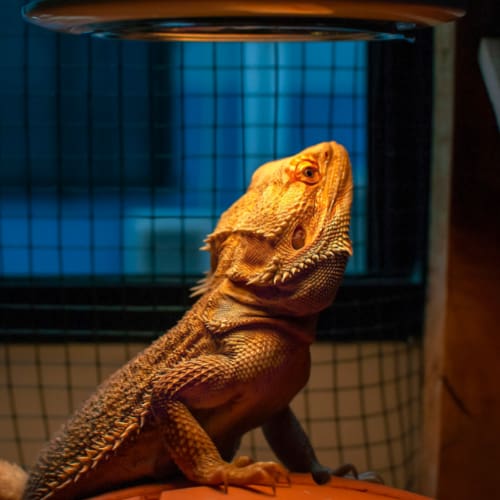
Minimum Recommended Dimensions
Most experts recommend these minimum standards for the enclosure dimensions:
- Babies under 6 months: 24” x 24” x 12” (60x60x30 cm)
- Juveniles 6-12 months: 36” x 18” x 12” (90x45x30 cm)
- Adults 12+ months: 48” x 24” x 12” (120x60x30 cm)
These dimensions meet basic space needs, but larger enclosures are ideal, especially for exceptionally big dragons.
Best Practices
Custom building extra spacious habitats allows more room for ideal growth. The floor space must be at least 144 sq inches (930 sq cm) per adult dragon. Height should range between 18 and 24 inches (45-60 cm) for climbing enrichment, and length needs to be over 4 feet (120 cm) to provide adequate running room.
Greater floor area and height help prevent restrictive conditions as the bearded dragon grows.
Custom Extra Large Enclosures
Truly giant bearded dragons over 24 inches (60 cm) long require exceptionally large custom habitats with over 6 feet (180+ cm) length to thrive. Maximizing space prevents any potential welfare issues.
Providing ample space throughout your bearded dragon's life is crucial for their well-being and growth. As discussed, their size can vary depending on various factors, and even giant morphs exist.
However, understanding their typical lifespan is equally important for responsible pet ownership. By providing the appropriate environment and care throughout their journey, you can ensure your bearded dragon thrives and enjoys a long, fulfilling life by your side.
As bearded dragons grow to adult size, their enclosure’s floorplan footprint must expand accordingly to maintain excellent welfare over their full lifespan.
Frequently Asked Questions
Below are some of the most frequently asked questions, compiled and answered, to ensure you have all the information you need about bearded dragon sizes.
How can I track if my bearded dragon is growing at a healthy rate?
Monitoring size milestones as a bearded dragon ages can ensure its growth rate stays on track compared to the average size for its age. Unexpected small or large dimensions warrant examination for underlying health issues.
How long does it take a bearded dragon to reach full adult size?
Bearded dragons experience quick juvenile growth rates, but their pace starts slowing around 12-18 months old as they near maturity. Most reach their maximum size potential around 18-24 months old.
What's the biggest bearded dragon on record and how did it get so large?
The largest confirmed bearded dragon was 28 inches long. Exceptional size like this can result from a combination of favorable genetics, excellent lifelong care and nutrition, and a long healthy life spanning more than 5 years.
Can you make a bearded dragon grow bigger than its genetics dictate through extra feeding or supplements?
No, responsible keepers allow their bearded dragon to reach the adult size predetermined by the individual's genetics, not forced growth. Pushing a dragon beyond its natural limits typically results in obesity, bone disease, organ damage, and/or other problems.
Final Thoughts
Most bearded dragons reach 18-24 inches (45-60 cm) in total length when fully grown. However, their final size can vary considerably depending on genetics, diet, housing, health, and other factors.
Key size metrics include:
- Hatchlings: Around 3-5 inches (7-12 cm) long
- Yearlings: 16-20 inches (40-50 cm) after rapid juvenile growth
- Females: Typically max out at 16-22 inches (40-55 cm)
- Males: Usually reach 18-24 inches (45-60 cm)
- Giants: Can surpass 24 inches (60 cm) with specialized breeding
While their genetic potential dictates dimensional limits, optimizing diet, housing, and health support each bearded dragon in reaching their personalized maximum size within the typical range.
Before bringing home any reptile, it's crucial to ensure it's a suitable choice for your family, especially if there are young children involved. Explore our guide to child-friendly reptile pets, packed with valuable information on selecting the perfect gentle and engaging species.
We hope this article managed to answer all the questions you had about bearded dragons. If you still have comments or queries, please leave them in the comments section below, or send us an email.
Thanks for reading!

